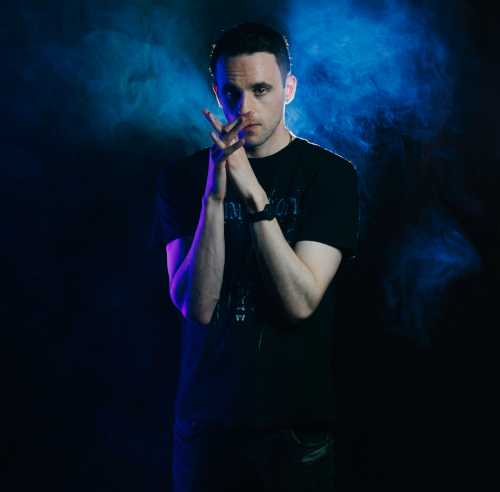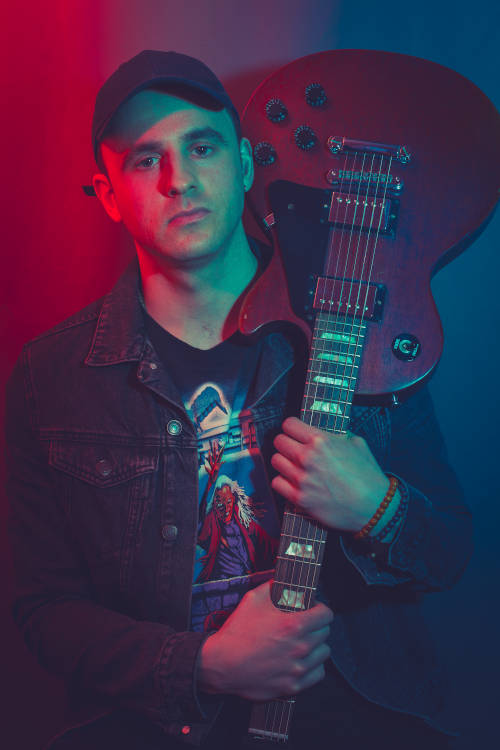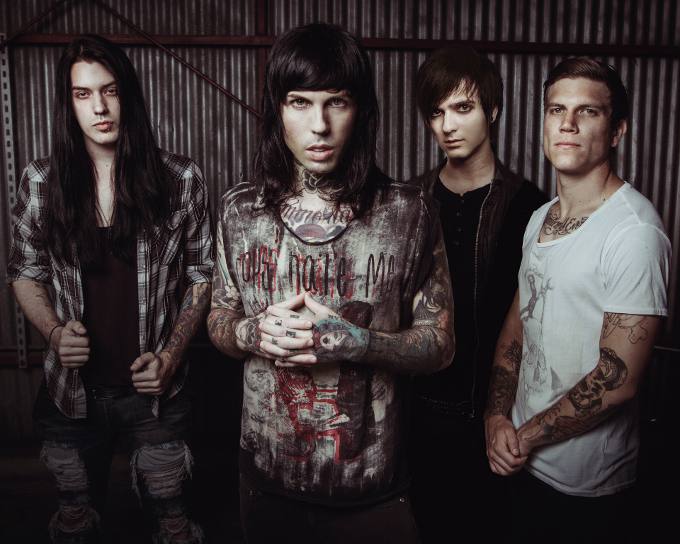
by Alexandra Mrozowska
— Senior Columnist —
More or less fifteen years ago journos and fans alike started to talk about a “new wave” of Glam and Sleaze Metal, some with hopes of bringing the ‘80s inspiration back to mainstream music.
This scene is still strong today, and certainly not that much of a “wasted generation” Crazy Lixx and Crashdïet declared it to be in the mid-2000s. But now the hopes of the ‘80s vibe seeping into the mainstream seem to be directed elsewhere. These days, the potential seems to be in a genre called Synthwave – its unabashedly ‘80s roots, strong nostalgia factor and electronic sound that’s perhaps more palatable for a modern day listener than Crüe-esque guitar riffs and thunderous drum rolls.
It already infiltrates the mainstream – with acts such as Miley Cyrus and The Weeknd – but also continues to inspire side projects by Melodic Hard Rock artists of the younger generation, from Erik Modin of Wildness to Michael Palace of Palace.
But the question is, does it work the other way around as well? Can an artist go from Synthwave to AOR/Melodic Rock, thus proving the potential of bringing the ‘80s spirit back into popular music…?
Everything Jon Siejka, the mastermind behind the Long Island, NY-based act Magic Dance, created to this day seems to confirm this. His new album Remnants, out this December via Frontiers Music SRL, is filled with pure ‘80s AOR/Melodic Rock – whereas Synthwave is actually what he started from. What’s prompted this kind of transition and how do an artist’s Synthwave and Pop sensibilities translate into Melodic Rock…? Hardrock Haven caught up with Jon to find out that and more.

Hardrock Haven: Remnants is Magic Dance’s fourth album so far and the second released via Frontiers Music SRL. Does it differ from the previous offering New Eyes, or is it perhaps more of a continuation of the formula you embarked on previously?
Jon Siejka: This new album sees me experimenting with darker lyrical themes. It’s a meditation on the inevitability of death and how that knowledge can motivate you to live a more authentic life. As the album progresses, the songs get lighter and more melodic, finally ending with a return to my older style of Synthwave.
Hardrock Haven: Whereas at least a few AOR/Melodic Rock musicians – especially those of the younger generation – have their Synthwave side projects, I believe Magic Dance actually started as a Synthpop/Synthwave project…
Jon Siejka: That’s right, back in 2012 I was doing a purely synth-based sound. I was a guitar player for years previously. It occurred to me somewhere around 2015 that it would be cool to incorporate some of that. That was also the time I discovered AOR. Melodic Rock to me is essentially Pop music with distortion guitars. Most AOR songs I hear are written using traditional Pop structures and are highly melodic. So, it’s not such a stretch between the three genres. Synthwave has more linear or looping structures but the melody is definitely there.
Hardrock Haven: Synthwave becoming more and more popular now, what do you think makes it so?
Jon Siejka: I’ve been out of that game so long it’s hard for me to answer. If I were to guess, I would say the fact that it was able to translate out of the artists’ basements and home studios and into live venues. Instrumental Synthwave is also great music to put on in the background while driving or working, which is probably boosting the streaming numbers. I think the Metal scene has helped too, being a big supporter of it, especially the darksynth stuff.
Hardrock Haven: You declare to have discovered AOR music not so long ago. Do you think it translates into the fresh approach you have to your own music now?
Jon Siejka: It’s funny how the Internet has leveled everything, even time. I was super inspired when I discovered AOR. It didn’t have to be 1986 for me to understand it and get excited about it. I think what I’m doing is incorporating some Synthwave elements. It’s more of a hybrid style and has less of a hard rock edge. If it were the 80s, I guess they’d call it Hi-Tech AOR.
Hardrock Haven: The genre of AOR spawned some big names for sure, but also many obscure bands and artists. Out of these less-known, which band or artist is your favorite and why?
Jon Siejka: Diving deep into AOR made me appreciate the fact that just because a band didn’t “make it” doesn’t mean that their songs were any less impactful. I’ve said this in a bunch of interviews but the American AOR bands Fortune, White Sister and Icon were a huge influence on me. I don’t think Magic Dance sounds like any of those bands, but that’s the source I originally tapped into.
Hardrock Haven: How did the songwriting and recording process for Remnants look like and was it any different than before? And how did you hook up with each of the musicians involved in the recordings?
Jon Siejka: Same as usual, in my little bedroom studio. Writing riffs, working out the production on my computer. Other than a couple of gear upgrades, the process has remained largely the same. Some guest musicians are friends that I’ve known for years, like Kevin Krug who helped me out with the demoing process. Many I found online, Tim Mackey and Stelios Andre specifically through YouTube. I know when someone has the gift for melody and an expressive guitar style. So those guys were a natural fit for the music.
Hardrock Haven: You claim you’re inspired not only by the ‘80s music but also the movies and entire culture of the era. What do you find so appealing about it? Can you recall a single ‘80s movie, cartoon, music video or other visual that made a lasting impression on you? Or an ‘80s movie soundtrack perhaps?
Jon Siejka: It’s difficult to describe. Part of it must be nostalgia. The decade seemed to be over the top and theatrical and idealistic. And there was a magic to it that you only get when you risk being cheesy. I don’t think we’ll see that level of sincerity in culture ever again. And I still remember the scene in “Pee-wee’s Big Adventure” when he’s being chased through the movie lot and runs past Twisted Sister. I remember watching that on VHS really, really young and rewinding it over and over. I thought they were the coolest looking people ever. And the most inspiring soundtrack was the one to Rocky IV. One of the best collection of AOR “montage rock” songs!
Hardrock Haven: One of your previous albums, 2016’s Vanishings, was released in a cassette format. What do you think prompted the revival of the format? And what’s your personal favorite format when you listen to music?
Jon Siejka: It’s a cool little physical item to sell to people. It taps into nostalgia and the desire for people to collect memorabilia. Usually, it’s limited edition which makes it even more appealing. It comes off as a personal item rather than a mass production run of CDs. My favorite format is streaming because of the convenience. Though I’ve been getting more and more into 7digital and supporting artists that way. The difference in quality is obvious but you can’t beat the convenience of streaming. I listen to a ton of music and various genres so Spotify is a must for me.
Hardrock Haven: Having released your second album for Frontiers Music SRL, what do you think are the pros and cons of it, especially in comparison to independent work you pursued earlier on?
Jon Siejka: They are putting me in front of people and in magazines/websites/shops that I would not have otherwise been. Being an independent musician is tough as all responsibilities fall on you.
Hardrock Haven: Absolutely. What are your plans as far as promoting Remnants is concerned?
Jon Siejka: The typical social media stuff. A few YouTube videos planned.
Hardrock Haven: Is there anything you’d like to add in the end?
Jon Siejka: Thanks for the opportunity and I really enjoyed these questions!



